Ella Fitzgerald was rightly called the First Lady of song, there has been no singer, male or female, who has had a more beautiful and expressive voice than hers, nor has there been another singer capable of improvising with her voice, doing what is known as scat, as if she were the best soloist in the band. His prodigious voice exuded tremendous joy and retained a youthful capacity throughout his career, having one of the most beautiful natural tones in history. It is curious that, unlike Billie Holiday, Ella never pulled tragedies (and there were several in her life) and let her work speak for her. Other singers may have more literature but no one sang better jazz than Ella Fitzgerald. This is a brief tour of her career through 20 essential songs:
A-Tisket-A-Tasket (1938)
Ella Fitzgerald got her ticket to fame in November 1934 when she won one of the first amateur nights at the prestigious Apollo Theatre in Harlem. She had applied to dance, but after watching a couple of dancers perform, she decided it would be better to sing – the best thing is that when you have a voice like Ella’s, you don’t need to be particularly prepared. However, her ugly duckling physical appearance made it difficult for her to get a job, despite her prodigious voice.
Her fortunes changed when she was introduced to Chick Webb, who led one of the best orchestras in the country. He wasn’t too keen on offering the job to the ungainly, unkempt girl, but Webb understood music and as soon as Ella opened her mouth to sing, there was no turning back. With Webb she recorded several hits such as “Love and Kisses” and “(If You Can’t Sing It) You’ll Have to Swing It (Mr. Paganini)”, although the best remembered is “A-Tisket-A-Tasket”, a 19th century nursery rhyme to which Fitzgerald lent his wonderful voice and incredible swing. The original version, with Webb’s orchestra, is much better, but the one that follows in the 1942 Abbott and Costello film Ride ‘Em Cowboy is not bad either.
It’s Only A Paper Moon (1945)
Webb murió de tuberculosis en 1939 y Ella se hizo cargo de su orquesta hasta 1942, cuando los problemas monetarios hicieron que se disolviera. A partir de entonces Fitzgerald comenzó su carrera en solitario, con Norman Granz como mánager, tuvo éxitos con los Ink Spots, Louis Jordan o los Delta Rhythm Boys con los que grabó este “It’s Only A Paper Moon” de Harold Arlen el 27 de marzo de 1945. A pesar de ser un número de easy listening, reforzado por los coros de los Delta Rhythm Boys, ya se puede escuchar a Ella marcándose un pequeño solo de scat.
Webb died of tuberculosis in 1939 and Ella took over his orchestra until 1942, when money problems caused it to disband. From then on Fitzgerald began her solo career, with Norman Granz as manager, and had hits with the Ink Spots, Louis Jordan and the Delta Rhythm Boys, with whom she recorded Harold Arlen‘s “It’s Only A Paper Moon” on 27 March 1945. Despite being an easy listening number, reinforced by the backing vocals of the Delta Rhythm Boys, Ella can already be heard playing a little scat solo.
Flying Home (1945)
She gives a spectacular scat solo on this song recorded in 1945, demonstrating that she is the singer who best knows how to make use of this technique that turns the voice into an improvising instrument like any other wind. The song was a classic of the swing era, composed by Benny Goodman and Lionel Hampton and which featured, in its original version, a transcendent solo by Charlie Christian, one of the fathers of the be bop revolution of which Ella Fitzgerald would be one of the few early swing figures to become an absolute follower, as can be seen in the following recording from 1949 in which, in one of those sessions that Granz organised at Carnegie Hall, Fitzgerald begins to improvise with her voice, leaving everyone behind, including musicians such as Lester Young and Roy Eldridge, until the Messiah of Bop himself, Charlie Parker, has to appear to perform a solo on a par with Ella’s.
Oh Lady Be Good (1947)
As I was saying, while her adored Louis Armstrong referred to be bop as “Chinese music”, Ella was totally taken with the new music, which is why she did not hesitate for a second to accept the offer of another of its greatest figures, Dizzy Gillespie, when he invited her to go on tour with his newly formed Big Band in 1947. Dizzy did it to please an audience that still did not understand the revolutionary new music, but in a short time he saw how Ella was able to improvise with them like the best instrumentalist, from this period are some of her best remembered recordings such as “How High The Moon”, in which she allows herself the luxury of inserting part of the melody of Parker’s “Ornithology”, or her well-remembered version of Gershwin’s “Oh Lady Be Good”, which features one of her best-remembered scat solos, in which she quotes herself and her “A-Tisket, A-Tasket”. When she reworked the song 13 years later for her Songbook dedicated to the composer, she would do it in a completely different way, turning it into a beautiful ballad without a solo. If it was already evident that Ella had the most beautiful voice in the history of jazz, these recordings showed that she could also do whatever she wanted with it, and she could have taken to the jams at Milton’s Playhouse and exchanged solos with Parker, Gillespie, Christian or any other bop luminary…
In addition to her undying love of bop, her tour with Gillespie also produced the love of her life, bassist Ray Brown, whom she married in late December ’47 and with whom she adopted her half-sister Frances‘ son. However, the relationship did not last long, they divorced in 1953 and, despite sporadic relationships, Ella would spend the rest of her life alone, devoted entirely to her art, her public and the television soap operas when she returned home from her many tours.
Dream A Little Dream Of Me (1950)
Ella Fitzgerald had grown up listening to, and adoring, like all other jazz singers, the man who started it all, Louis Armstrong. In 1946 they collaborated for the first time when they recorded “You Won’t Be Satisfied (Until You Break My Heart)”, where it was clear that although it seemed unnatural, their voices matched perfectly, his was rough and gravelly, hers velvety smooth, they shouldn’t work so well together, but they do. Together they would record some of the best songs of their career and their first absolute masterpiece would come in 1950 when they made “Dream A Little Dream Of Me”. First the trumpet that invented jazz as we know it comes in, then Ella does a little scat and starts singing in a haunting way, with Satchmo’s trumpet in the background, then his voice comes in and Ella answers him with her voice, just as Pops had done earlier with the trumpet. An absolute delight.
Lullaby Of Birdland (1954)
One of my favourite songs of the 50s, composed by George Shearing in 1952, has two absolutely marvellous versions, both performed in the same year by two of the most important jazz singers of all time (if we add Billie Holiday we have the golden trio), Sarah Vaughan and Ella Fitzgerald. The former recorded it for her best album, the live one with Clifford Brown (although in this song the trumpeter does not play), and it opens with a wonderful vocal part close to the scat, Ella’s version opens with a pop chorus until her incredible voice enters. Musically the former is superior but Ella’s voice is Ella’s voice, so I declare it a tie….
Let’s Do It (Let’s Fall In Love) (1956)
We are entering the imperial phase of Fitzgerald’s career, Norman Granz has just founded Verve Records for the greater glory of the singer, and the first record to appear on the label will be the seminal Ella Fitzgerald Sings the Cole Porter Song Book, the first in a long series on the great songwriters of Tin Pan Alley. The singer was 39 years old, but her voice still retained its childlike joy, although now it sounded more confident. If that same year, 1956, Elvis Presley would go down in history singing black music like no other white man had done, here we have a black singer singing the music of a white composer, originally written for people like Fred Astaire or Bing Crosby, managing to make of it the best interpretations ever made, elevating those Broadway songs to the category of art. We begin with this wonderful “Let’s Do It (Let’s Fall In Love)”, written in 1928 and with lyrics totally ahead of their time, which come to say sex is fun and totally natural, so let’s do it, to which Ella knows how to add all the necessary sensuality.
I Get A Kick Out Of You (1956)
One of the greatest classics of Cole Porter‘s career, it has been recorded practically all over the world, but the two best versions correspond to Ella Fitzgerald and Frank Sinatra, two singers who had enormous mutual admiration for each other. Not in vain after the enormous success of Ella’s Songbooks did Sinatra forbid his company to ever release anything similar with his work, compiling the songs by composers, not in vain the Voice considered Ella Fitzgerald to be the best singer (male or female) he had ever heard and the only singer who made him nervous to sing with her because he had to be at her level.
In the Ella version you can see Granz’s approach to these recordings: I always put her in front, I didn’t sink her into the mix. The reason was that I frankly didn’t care what happened to the music. I was there to support it. I’ve had conductors tell me that on bar 23 the trumpet player played a wrong note. Well, I don’t care. I wasn’t making perfect records. If they came out perfect, fine. But I wanted to make records where Ella sounded better. He more than succeeded.
Cheek to Cheek (1956)
1956 was possibly the most important year of his career, not only did he begin his majestic collection of Songbooks, but he also recorded the first of the three albums he would record with Louis Armstrong, as well as the second volume of the Songbooks, the one dedicated to Rodgers & Hart. But let’s go back to the album with Armstrong, the fundamental Ella & Louis, with that cover that shows them as they are, the two least cool guys in the musical universe, they will write love songs but not for each other, yes, he is the most important figure in jazz and she is its most gifted singer… On that album there were many wonders like “They Can’t Take That Away From Me” (another song that should be here) or “Can’t We Be Friends”, but in the end I’ve decided for the best version ever recorded of “Cheek To Cheek”, the classic that Irving Berlin wrote for Top Hat with Fred Astaire and Ginger Rogers.
Bewitched, Bothered, and Bewildered (1956)
One of the peaks of Ella’s career, this piano ballad is one of her most magnetic and magical interpretations, being the best representative of the album dedicated to Rodgers & Hart, a work in which other songs such as “Have You Met Miss Jones?”, “The Lady Is A Tramp” or “My Funny Valentine” also stand out. But this is one of those definitive versions, at the end Ella could throw the mike away and leave, anyone who sings it again will have to deal with this incredible interpretation.
Let’s Call the Whole Thing Off (1957)
The album with Louis Armstrong had worked so well that within a year Ella and Louis were back together again, recording a double album. This time, since there was much more space, several solo songs were recorded, although the best moments came when their voices came together again. As an enthusiastic Björk declared: They were complete opposites in the way they sang, but they were still completely functional together, and they respected each other. There is no better example in Ella & Louis Again than Gershwin’s wonderful “Let’s Call the Whole Thing Off”, You like poteitos, I like potatos…
Caravan (1957)
Duke Ellington‘s Songbook is one of the most special, not only because the composer is not one of the white composers of Tin Pan Alley, although he is none other than the greatest composer in the history of jazz, but because the honoree plays on the album with Ella along with his glorious orchestra. And it may not have been the orchestra of the early 1940s, the one known as the Blanton-Webster Orchestra, but it was the second best he had, the one that had just triumphed in style at the 1956 Newport Festival. Here are Johnny Hodges, Paul Gonsalves, Harry Carney and the indispensable Billy Strayhorn, as well as Ellington himself, accompanying a Ella in top form, having fun with some of the best pieces from an unforgettable songbook such as “Take the “A” Train”, “Perdido”, “Cotton Tail”, “Do Nothin’ Till You Hear from Me”, “It Don’t Mean a Thing (If It Ain’t Got That Swing)”, “I’m Just a Lucky So-and-So”, “I Got it Bad (And That Ain’t Good)” or this unforgettable “Caravan”.
Sophisticated Lady (1957)
Many, many years ago, before I turned 20, in the middle of my rock music purchases, I got hold of a jazz compilation that was very cheap, they were all there, Louis Armstrong, Duke Ellington, Charlie Parker, Miles Davis, John Coltrane… and Ella Fitzgerald. The song that came out of it was this “Sophisticated Lady”, another Duke Ellington signature wonder, which was the song that turned me into a lover of the genre who had the most beautiful voice I’d ever heard. What he was able to do with it wasn’t bad either, sounding exactly like the title of the song, and if, in addition, we add a wonderful solo by possibly the best tenor saxophonist to have ever played in Ellington’s band, Ben Webster, then we have another ace in the hole.
Midnight Sun (1957)
In the midst of recording Duke Ellington’s Songbook, Ella Fitzgerald recorded another of her seminal albums, Like Someone In Love, in which the highlight is the appearance of the tenor saxophone that most resembles Ella’s voice, the wonderful Stan Getz, who plays on four songs, including this “Midnight Sun”, in which, after a sumptuous string arrangement, the soft velvet sound of Getz’s saxophone enters, giving way to Ella’s voice. If the duets between Armstrong and Fitzgerald worked because of the contrast, here we have two very similar voices that also work perfectly.
Summertime (1958)
Louis Armstrong and Ella Fitzgerald’s third and last album together was an adaptation of Gershwin’s opera Porgy & Bess, made in the same year as the Miles Davis version with Gil Evans. Both are colossal and it is difficult to choose one over the other, although this is the definitive vocal version. In her most famous song, Satchmo’s trumpet opens, but it is Ella’s voice that ends up stealing all the spotlight, achieving a disarming delicacy as well as an absolute intensity.
https://www.youtube.com/watch?v=lnXLVTi_m_M
Blue Skies (1958)
From Irving Berlin’s Songbook one could also choose many songs, but in the end I have opted for this marvel in which, besides Berlin’s marvellous melody, one can be fascinated by how she improvises like the best musicians of her time. The curious thing is that this marvel did not make it onto the original album and was not included until the 2000 re-edition on CD (although subsequent vinyl reissues have also added it).
Someone To Watch Over Me (1959)
It’s hard to choose just one of Ella’s Songbooks, but if I were forced at gunpoint to choose one, I’d go for Porter’s… Or Ellington’s… Or Gershwin’s… The fact is that Fitzgerald is the definitive interpreter of the author of “Rhapsody In Blue”, before arriving at this colossal compilation of his four-disc oeuvre, she had already chosen three other Gershwin songs on this list (“Oh Lady Be Good”, “Let’s Call The Whole Thing Off” and “Summertime”), so it’s clear that we may be talking about Ella’s favourite composer. But one of the other things that makes this wonder stand out is the fabulous arrangements by Nelson Riddle, the man who worked on the best records of Sinatra’s career, wraps Ella’s sophisticated voice in a velvet cloak as you can hear on this delicate “Someone To Watch Over Me”.
S’Wonderful (1959)
Another marvel from the glorious Ella Fitzgerald Sings the George and Ira Gershwin Song Book, a wonderful arrangement by Riddle and another classy performance by Ella. Like all Tin Pan Alley classics, it has hundreds of versions, from Bing Crosby to Dean Martin, Gene Kelly to Fred Astaire, but again Ella can claim the title of definitive version. Although it’s not that good, I’ll leave you here with an amusing performance on the Ed Sullivan Show in 1964 in which she exchanges scat lines with Sammy Davis Jr, although the most interesting part comes before, when Sammy sits at the piano watching Ella sing in rapt attention, but stay with the one who looks at you like Sammy looks at Ella…
Mack The Knife (1960)
One of the most famous performances of her career, Ella was playing in Berlin on 3 February 1960 and decided to sing “Mack The Knife”, a song from The Threepenny Opera by the Germans Bertolt Brecht and Kurt Weill that Bobby Darin had made into a worldwide hit the previous year, 1959. The thing is that after the first few verses Ella forgot the words to the song, even though at the beginning she had already warned that she hoped to remember all the lyrics, but Fitzgerald has three decades of experience and instead of resorting to the easy trick of putting the microphone to the audience or, worse still, standing up, she decides to start improvising a totally improvised lyric, he decides to start improvising a whole new lyric right then and there, never missing a beat, even acknowledging that he has forgotten the lyrics, while remembering Darin and Louis Armstrong, who had also recorded them, and even improvising in imitation of the latter’s voice. The result is an encapsulation of the joy and happiness he was able to transmit to everything he did, even his “failures”.
Accentuate The Positive (1961)
I will end, for lack of space, with a song from her Songbook dedicated to Harold Arlen, the sixth in the series, two more would come, the one dedicated to Jerome Kern in 1963 and the one dedicated to Johnny Mercer the following year, both remarkable, but, as I said, this is the twentieth song by Ella and I want to close with it, because it seems to me that it adapts perfectly to the spirit that the singer represented, Accentuate the positive, eliminate the negative. Fitzgerald could have chosen the most tragic side of life, her mother died young and her stepfather abused her, she went hungry, was in an orphanage and was despised several times for her appearance and her skin colour, but Ella knew how to continue transmitting the joy of life, through one of the most wonderful instruments that ever existed, her voice.

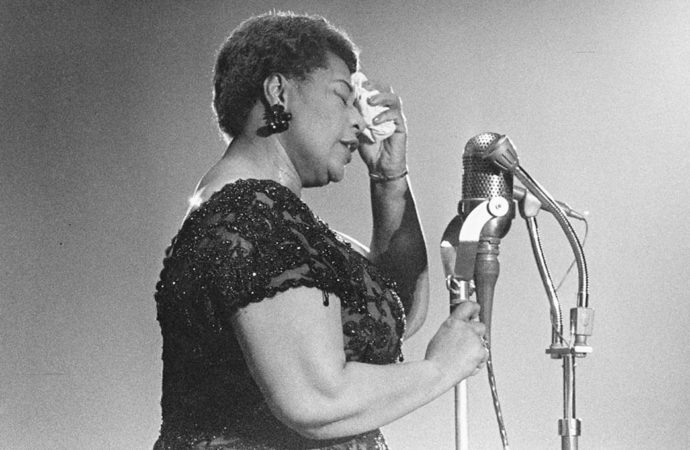

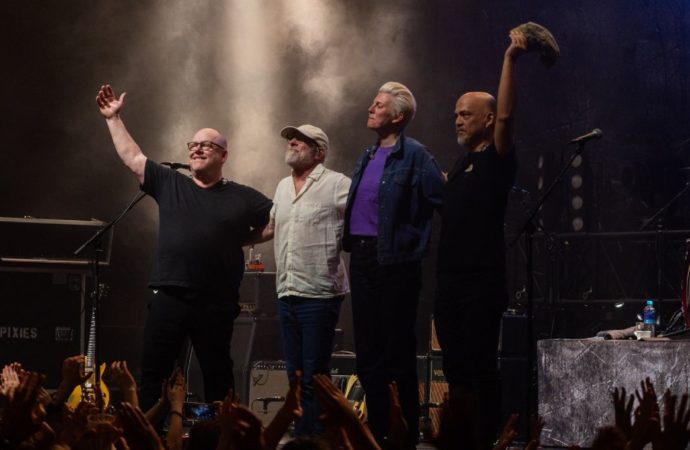
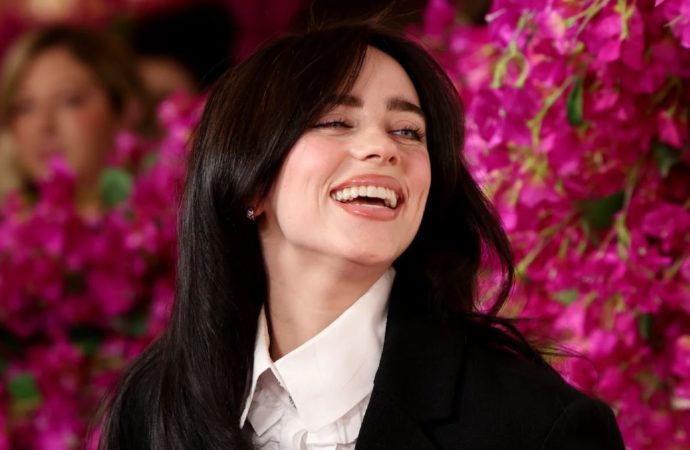

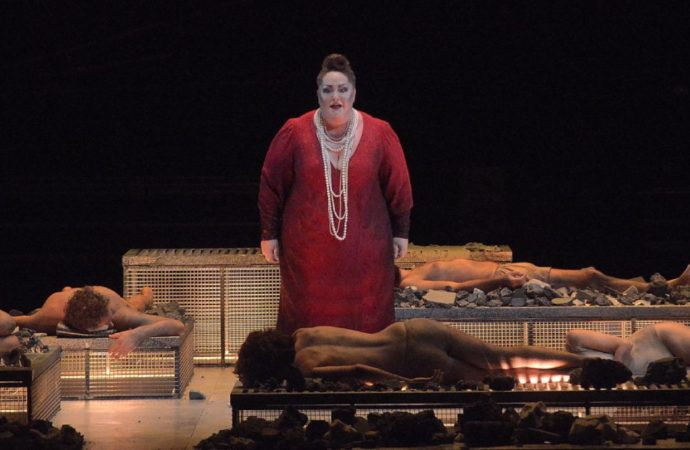
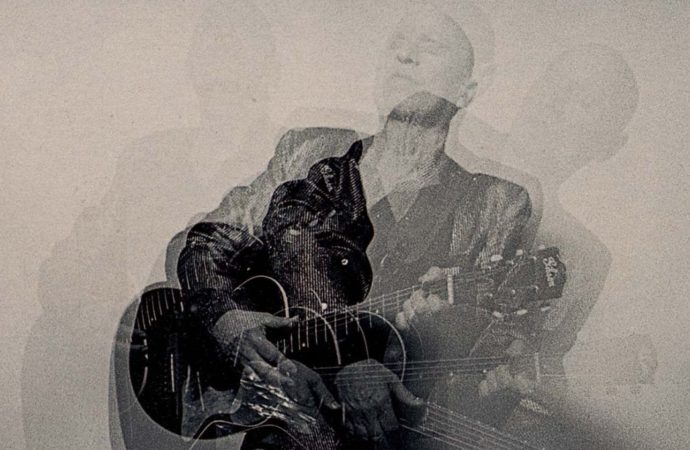

No one has posted any comments yet. Be the first person!